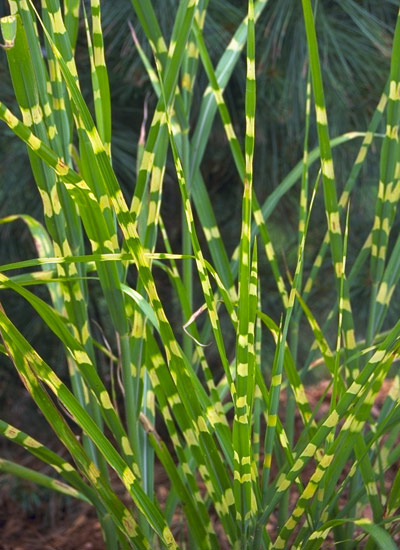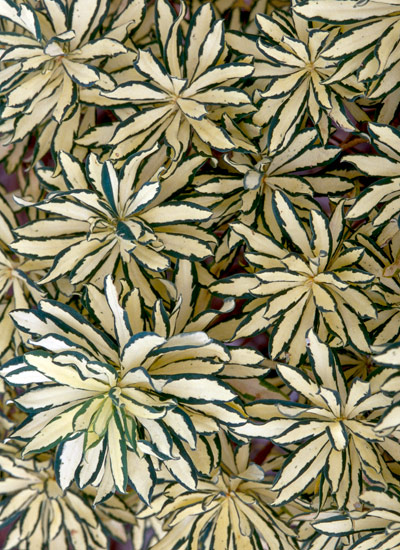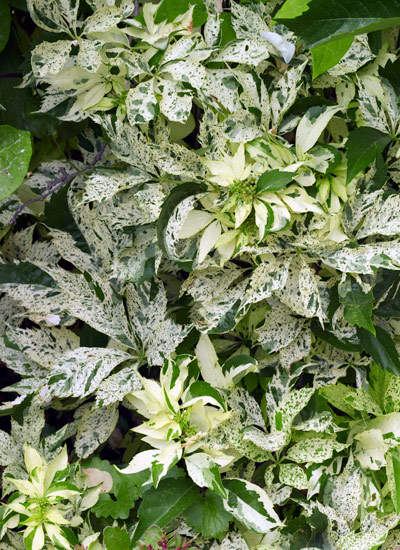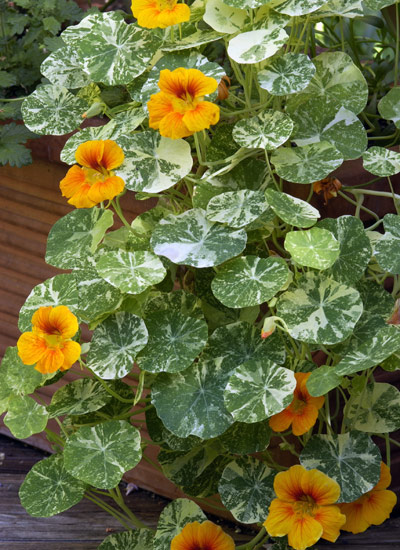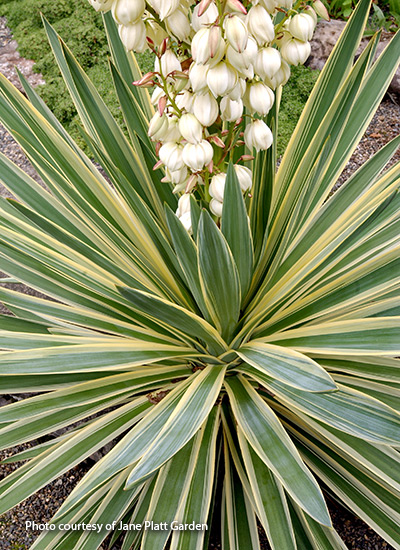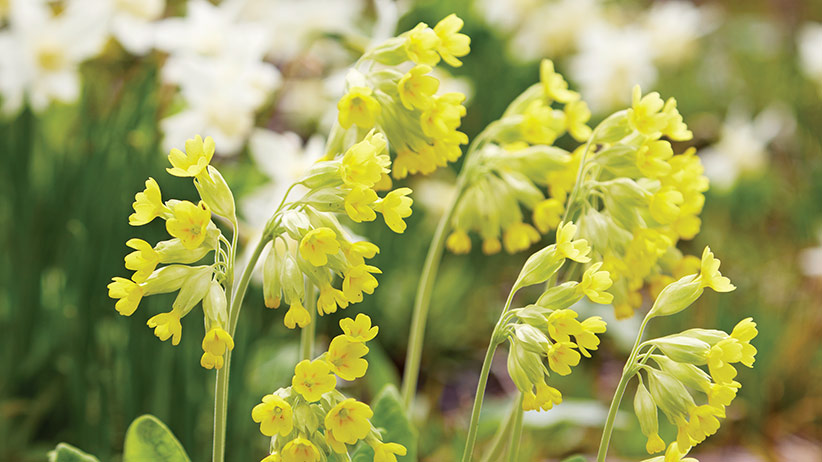Plants with variegated foliage pack in the color!
Even the healthiest plant won’t bloom all of the time. How can you add more interest in the space you have? Plants with variegated foliage keep any space colorful, whether there are flowers nearby or not.
What is variegation?
Plants that have stripes, blotches, marbling or other marks different from the color in the rest of the leaf are variegated. Smaller variegated plants are good in mixed containers, while larger variegated plants make excellent focal points. Shade is a great spot for variegation to shine, too — it shows up well in low light.
You Might Also Like:
Best Hostas for Your Garden
Colorful Coleus Plant Combinations
Best Foliage Plants for Containers
Tips for growing and designing with plants with variegated foliage
- There’s less chlorophyll in the lighter areas of the leaf, so variegated plants sometimes scorch in full sun. Many of them, even if their plain green counterparts need bright light, will do better with some protection, especially from hot afternoon sun.
- Occasionally you may spot a section of a variegated specimen with all green leaves. Cut it away. If you don’t, odds are it will be more aggressive than the variegated parts and soon outgrow the rest of the plant.
- Smaller variegated plants are excellent in mixed containers. They can be focal points or supporting players to bolder flowers. Either way, if the blooms wane during the summer, variegated foliage can punch up the scene.
- Shade is a good spot for variegation to shine. And if you only get to enjoy your garden in the evening or early in the morning, variegated foliage is like having lots of white flowers — it shows up well in low light.
Our favorite plants with variegated foliage
Now that you know some basics about variegated plants, scroll down for six stunners for your garden!




